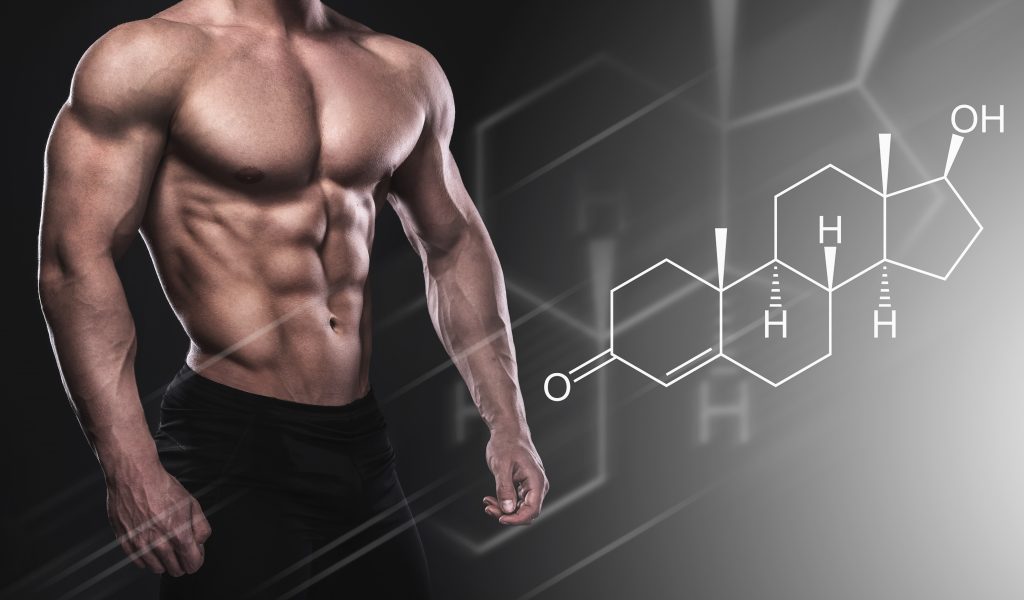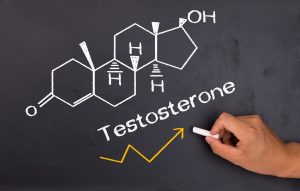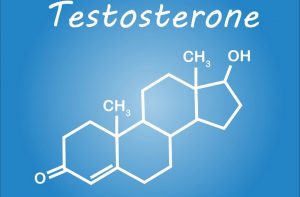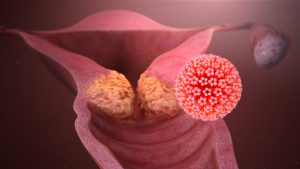
Muscular male body and testosterone hormone formula. Concept of a strength workout and anabolic steroids usage.
A normal hormonal background in a man is a guarantee not only of his “intimate” activity, but also of his personal efficiency and level of motivation. At the same time, such banal reasons as prolonged stress, alcohol intake and high blood sugar levels can significantly “undermine” men’s health. And the first signs of violations are almost invisible.
Decisive atom
According to modern data, every minute in the body of a healthy man, up to 11 million testosterone molecules are produced, each of which has the potential to become estradiol.
We are talking about the attachment of a hydrogen atom to the testosterone molecule, this process itself is called aromatization, and the enzyme responsible for it is aromatase.
The normal content of female hormones in a man ensures the “health” of a number of organs and systems (bones, blood vessels, and even neurogenesis). But, if there are too many such “transformations” – the man begins to “resemble” a woman. Moreover, both from the point of view of physiology (hairiness, voice timbre, distribution of fat, and so on), and psyche (mood lability, moodiness, tearfulness).
There are a lot of factors that can provoke this process in the modern world. Here we will look at just a few of them.
Stress
Recent studies have shown that stress caused by, for example, financial problems provokes a decrease in testosterone by 10-20%. And a return to normal occurs only when a positive result is achieved in a disturbing issue.
Alcohol and excess weight
Researchers from the United States have demonstrated in an experiment that a man needs 3 months of alcohol abuse in combination with gaining 20 kg of weight for his secondary sexual characteristics to begin to feminize.
This is due to both the “estrogenic” influence of alcohol itself and the ability to “produce” female hormones in adipose tissue.
So both alcohol and being overweight are a serious risk of losing their masculine appearance.
Nutrition
One of the most powerful “competitors” of testosterone is insulin. Its release occurs after eating and, normally, quickly returns to its original “position”. However, an excessive amount of sugar or easily digestible carbohydrates requires an increase in insulin concentration.
In such conditions, testosterone “has nothing to do” but wait until the insulin “calms down” and returns to normal. And the level of the “male” hormone in the blood is steadily decreasing.
Do not forget about phytoestrogens, which are present in significant quantities in soybeans and, oddly enough, in fatty milk.
By the way, men should be more careful with the use of grapefruits – they increase the content of that very aromatase in the blood and the risk of “transformation” of testosterone into estrogen.
Condition of the heart and blood vessels
Surprisingly, male potency has a direct relationship with blood pressure and heart rate.
Scientists have proven that an increase in heart rate above 80 beats per minute leads to a decrease in testosterone levels. The same applies to the state of blood vessels.
High blood pressure and pathology of the coronary (cardiac) vessels literally “block” the production of testosterone.
Both the one and the other mechanism have a strictly compensatory character and are “switched on” when it is necessary to suspend the tonic effect of the hormone on the heart and blood vessels.
Thyroid
Lack of thyroid hormones (hypothyroidism) is directly related to a decrease in testosterone.
And among other things, the thyroid gland has a large-scale effect on metabolic and anabolic processes throughout the body. So thyroid control is not only important in the context of testosterone.
Warning signs
Hormonally healthy men are associated with high activity. Mental, physical and sexual. And the first “bell” of testosterone decline is often lethargy.
Attention is drawn to a decrease in libido and impaired potency, mood instability and moodiness, outwardly similar to the “female” premenstrual syndrome.
With a significant decrease in the hormone, female-type obesity begins – adipose tissue is formed in the waist, hips and abdomen. And the timbre of the voice becomes “softer”.
Diagnostics
Testosterone, like many other hormones, is “under the control” of the pituitary gland. This effect is realized according to the feedback principle, when a decrease in testosterone provokes an increase in the LH of the pituitary gland, and vice versa. For this reason, it is more expedient to assess the hormonal balance in a comprehensive manner.
The concentration of the hormone in the blood is also influenced by SHBG, a globulin that binds sex hormones. This protein is produced by the liver and serves as a carrier of testosterone https://en.wikipedia.org/wiki/Testosterone to target organs and tissues. In this case, testosterone is bound “during delivery” and cannot exert its biological effects. And an excess of SHBG in the blood can cause symptomatic testosterone deficiency, with its normal production.
Thus, in order to diagnose male hormonal balance, it is necessary to assess at least three indicators:
LH,
free fraction of testosterone,
SHBG.
To this list, an endocrinologist can add pituitary prolactin, which is often the cause of a decrease in testosterone, and TSH, to assess the functioning of the thyroid gland.


